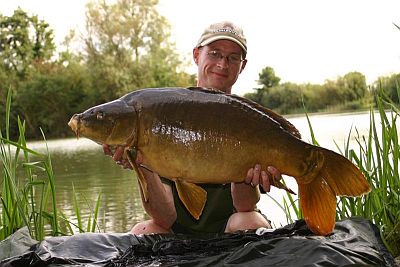What is it that allows one angler to catch consistently, whilst another struggles to get a look in? Luck might play a part from time to time, but by and large it is effort that will bring results; the angler who is willing to learn from their experiences, adapt their approach and refine their techniques will always fare better than the angler who leaves it all to chance.
It’s not rocket science. Like so many things in life, it comes down to common sense. Most anglers learn through trial and error; by trying new methods and approaches and then analysing the results. The key is in understanding that this learning process can take some time to master, and even the most skilled anglers still get it wrong from time to time. Ultimately, you never stop learning; each time you cast a line you learn that little bit more, and each time the thinking angler goes fishing he draws on that little bit more experience.
A major facet of successful angling is the ability to keep an open mind, whilst not allowing yourself to be unduly swayed by others – it’s about working things out for yourself. There’s no doubt that this is the more difficult route, but there are few shortcuts in life, especially when big fish are your quarry! There’s a fine line between learning from the experiences of others and following the crowd; unfortunately, many of today’s anglers choose the latter, whether they know it or not.
If you are going to follow the actions of others, assuming they have been successful, the key is to try to understand what the successful elements were that brought about results. This allows you to make further subtle adjustments in order to try to improve the method or approach and ultimately make it your own. The goal should always be to increase your understanding; this is the only sure-fire way of improving your catch rate. Suppose you are fishing a local water and you learn that a fellow angler has been catching a few fish from a particular spot. If you yourself place a bait on this spot you may well pick up a fish and, thus, you have succeeded by following the actions of another – but what made the spot successful? What made that spot produce above all others?
By trying to understand what made the difference, you can often improve results further still. The first thing I would do is break out a feature finding rod and spend a bit of time finding out what’s going on under the surface. You never know, you might be just on the edge of a weedbed or just off the ledge of a raised plateaux, and by moving the bait further into the clear spot, or up onto the plateaux, you might catch even more fish. In essence, you have taken a piece of information, analysed it, perfected it, and made it your own. This same mindset should be prevail at all times when thinking about approach, methods and tactics. Of course, it is possible to tinker with things too much, so another important factor is knowing when to intervene and when to leave things well alone, but as the old adage goes ‘he who dares, wins.’
 Making subtle changes to an already successful approach brought about three upper twenties, including this one, just hours apart.
Making subtle changes to an already successful approach brought about three upper twenties, including this one, just hours apart.
When you look back through carp angling history, there are many examples of innovators who took the time to try and gain a better understanding of the sport with amazing results. Until the late seventies, most carp rigs consisted of the bait mounted on the actual hook, and it was not until Kevin Maddocks and Len Middleton conducted a series of tank tests that they concluded that carp were actually spooked by the feel of the hooklength passing over their lips. Through trial and error, they eventually found a way to mount the bait on a supple two inch hair and the rest, as they say, is history!
It’s like the child who takes apart a working radio just to see how it works. There may not have been any need to do it in the first place but by doing so a better understanding of its workings is gained – and it’s the same with fishing. Learn what effects the behaviour of the quarry and you will become far more adept at catching.
The complete angler is one who contemplates almost every aspect of his or her fishing, and is never afraid to ask ‘what if?’ in relation to bait, rigs, tackle, approaches and techniques. It’s also about facing up to any shortcomings. If there is an area of your fishing you are not particularly good at, tackle it head on. If you can’t cast a rod properly and you’re suddenly faced with all the fish in a lake showing at well over a hundred yards, then you have a problem!
Likewise, if you don’t know how to rig up and use a feature finding set up you could be missing out on vital information about the underwater topography of the lake. And what about the fish themselves? If you don’t know how to go about finding the carp in your local lake before you start fishing, you could end up setting up in a swim that’s not seen a fish for weeks!
The key is in being able to tackle your fishing related demons, and in the second part I’ll detail how I did just that with one aspect of my own fishing.
Until then, tight lines…
Julian Grattidge
March 2011








